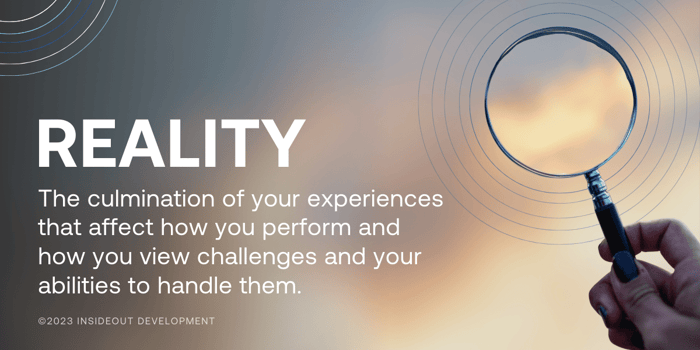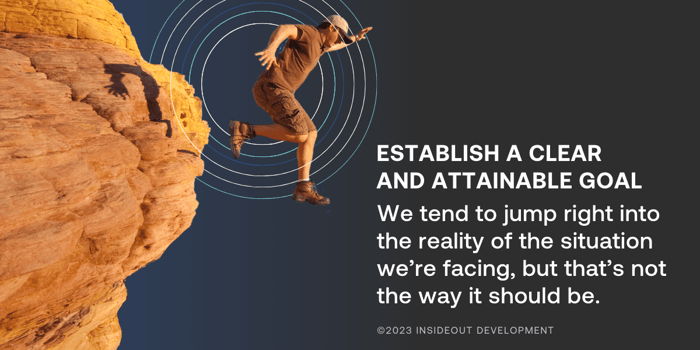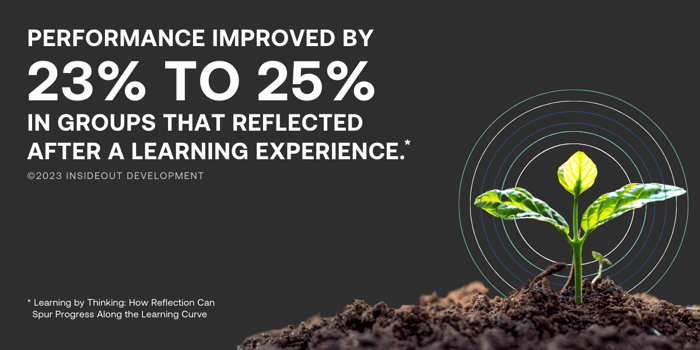Reality is, in essence, the way you see the world. It’s the culmination of your experiences that affect how you perform and how you view challenges and your abilities to handle them. Every person will view reality differently because they have a different perspective.
In problem-solving, reality is your perception of the things in your environment or situation that could impact your ability to achieve a goal. It’s only after you’ve fully considered your current reality that you can start working toward solving the problem and, ultimately, achieving your goal.
Below, learn how to leverage the GROW® Model to simplify problem-solving and boost employee performance in your organization.
Problem-Solving in the Workplace Must Consider Multiple Realities
Because each person involved in a scenario has a different perception of reality, it’s a good exercise to consider how others involved would describe the situation. Try to examine all aspects of the situation to uncover a more comprehensive solution.
In a coaching conversation, it’s important that both parties have a chance to share their reality. Returning to our fairly simple performance goal of “turning reports in on time,” the manager may not see the performer's entire reality.
Maybe the performer can’t begin compiling the report until he gets a component from another department, and he doesn’t get it until the day before the report is due. This obstacle may be unknown to the manager.
The manager also has their own reality. The employee may see the deadline as arbitrary anyway, but the manager’s perspective may illustrate why the reports need to be punctual.
Using the GROW Model to Assess Reality
Co-created by Alan Fine nearly 40 years ago, the GROW Model is a decision-making framework that helps individuals and organizations set and achieve purposeful goals. While the “G” in the model’s name stands for Goal, the “R” represents Reality, what we're talking about here.
Within this component of GROW, decision-makers are encouraged to reflect on:
- The problem they’re facing
- What they’ve tried so far and the results of those efforts
- The obstacles they see in their way
That said, you shouldn’t assess your reality until you’ve established a clear and attainable goal. We tend to jump right into the reality of the situation we’re facing, but that’s not the way it should be.
Think of your average problem-solving sessions. You start with “Here’s what’s going wrong…here’s everything I’ve tried and why it won’t work….and here is who and what is getting in my way.” In all that venting, you lose focus on your goal. You may feel better in the short term, but you probably haven’t solved the long-term concern.
Reflecting on where you’re stuck is often what sparks the process and inspires you to solve the problem — but to really achieve success, begin by determining or clarifying your goal. Once you understand your goal, you are in a better frame of mind to reflect on reality.
The Risks of Lingering in Reality
Reflecting on reality, particularly the things we’ve attempted in the past, has actually been shown to improve performance and help us make better decisions.
In fact, a 2016 study showed that performance improved by 23% to 25% in groups that reflected after a learning experience. Reflection through sharing information with a colleague was shown to improve the learning process even more than private reflection.
But there’s a fine line between reflecting versus lingering on your reality. It’s easy to fall victim to the “woe is me” principle. By and large, we’re more comfortable thinking about all the things that could go wrong than we are at optimistically moving through the problem-solving process.
When faced with solving a problem or making a decision, discuss and think through the relevant realities — but then, move quickly into Options that might be available to solve the problem.
While it’s important to structure thoughts around reality, it is not “an end in itself, temporarily raising awareness about important issues, but failing to lead to the kind of action steps necessary to enact strategic change.”
Reflect on Your Reality to Improve Performance
To reiterate: After thoroughly assessing your present reality, you can begin exploring potential options for solving the issue and, ultimately, select a Way Forward that will put you on the path toward achieving your goal.
By leveraging the GROW Model to reach workplace goals, you create a system of continual performance improvement — benefiting individuals, teams, and the organization as a whole.
Want to learn more about GROW? Connect with one of our coaching specialists and watch your team’s performance soar.





